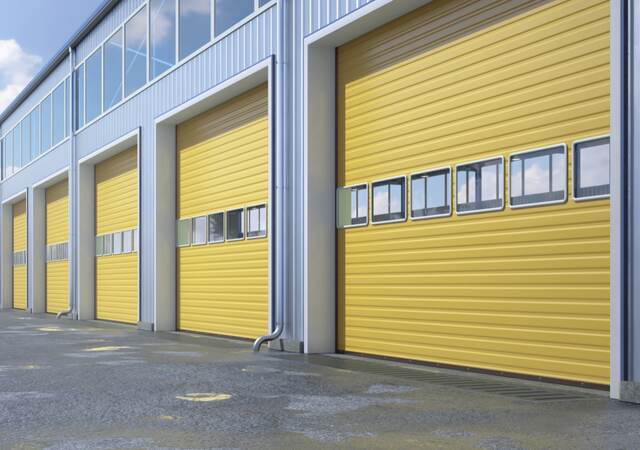November 29, 2023
By John K. Taecker, PE senior regulatory engineer - Distinguished member of Technical Staff, William Henry Merrill Society
First published in April 1973, CAN/UL 325, the Standard for Door, Drapery, Gate, Louver, and Window Operators and Systems, helps mitigate the risks and hazards related to electric operators for doors, draperies, gates, louvers, windows, exterior awnings and other opening and closing appliances. The hazards addressed include fire, electric shock, casualty, and entrapment. CAN/UL 325 is a binational Standard used for product certification in both the United States and Canada and is a National Standard of Canada.
CAN/UL 325 is referenced in the International Building Code (IBC), the International Residential Code (IRC), and International Fire Code (IFC) for operators that automatically open and close such applications as garage doors, automatic vehicular gates, and fire doors. Products installed for these uses are required by these codes to be listed (certified) and labeled in accordance with CAN/UL 325.
Further, other product types covered by UL 325 are often required by code authorities to be listed (certified). The National Electrical Code® (NFPA 70, Annex A) and the Canadian Electrical Code (CEC, CSA C22.1, Appendix A.2) reference CAN/UL 325. The use of a listed (certified) product in accordance with CAN/UL 325 is the most direct way to demonstrate compliance with the electrical codes where approval by the code authority is required.
In the U.S., for residential garage door operators, CPSC Federal Law (16 CFR Part 1211) requires that these products comply with UL 325 entrapment protection provisions by direct reference to UL 325.
This Standard is used by UL Solutions to certify products in the following categories:
- Door, Drapery, Gate, Louver and Window Operators and Systems (FDDR)
- Door, Drapery, Gate, Louver and Window Operators and Systems for Use in Hazardous Locations (FCQU)
- Fire Door Operators with Automatic Closers (GUJY)
- Retrofit Rolling Steel Fire Door Operators (GUNL)
- Passenger Boarding Bridges (QGLA)
UL Certified products can be found using our complimentary search tool UL Product iQ®. Access to the code authority features of Product iQ requires a simple one-time registration.
Every product category certified by UL Solutions has specific guide information that provides additional details explaining:
- Equipment, materials or systems included in the listings
- Intended use, restrictions or supplemental information that apply
- Standard(s) used to evaluate products under the category
- Listing, certification or classification Mark information for the category
Recently, a Pilot Impact Assessment was conducted to assess the impact of UL 325 on public health and safety, specifically the influence of the dual entrapment protection requirement for residential garage door operators and systems, after its inclusion in the Standard in a 1991 revision. The Pilot Impact Assessment studied NEISS and other safety data to look at trends occurring after 1991 and then evaluated the methodology to determine the effectiveness of UL 325.
By examining the Consumer Product Safety Risk Management System (CPSRMS) data, a decrease of more than 50% can be noted in incidents, fatalities, and entrapments as a percentage of all garage door injuries, showing that UL 325 has had a positive impact on public health and safety.
Note: Although National Electronic Injury Surveillance System (NEISS) data shows an increase in the entrapment injury count, this increase is more likely due to a rise in the number of electronic residential garage door operating systems used by consumers as opposed to increased risk of entrapment from these devices during this time. Additionally, even after the implementation of new UL 325 safety requirements in 1991, many products continued to exist in the field that were not compliant with the new requirements.
UL Solutions has determined that the casualty hazards inherent in the products covered in these product categories have been reduced to an acceptable degree; however, the ultimate safety is dependent upon selection of the proper certified product for the application, as well as proper installation, use and maintenance.
The local code official or code authority should be consulted prior to installation of these products. Installation should be performed by a qualified installer using the manufacturer's instructions. Special care should be exercised during installation of all operators to ensure that recommended safety devices, such as photoelectric sensors or reversing-edge switches, are properly installed.
Additional requirements for testing and certification are applicable for operators installed on fire door assemblies, as noted in the Guide Information.
You can view UL 325 here. Additional information about the evolution and impact of UL 325 over the last 50 years can be found in the DASMA article found here.
Stay informed
Actionable insights on the topics you choose, delivered directly to your inbox.



